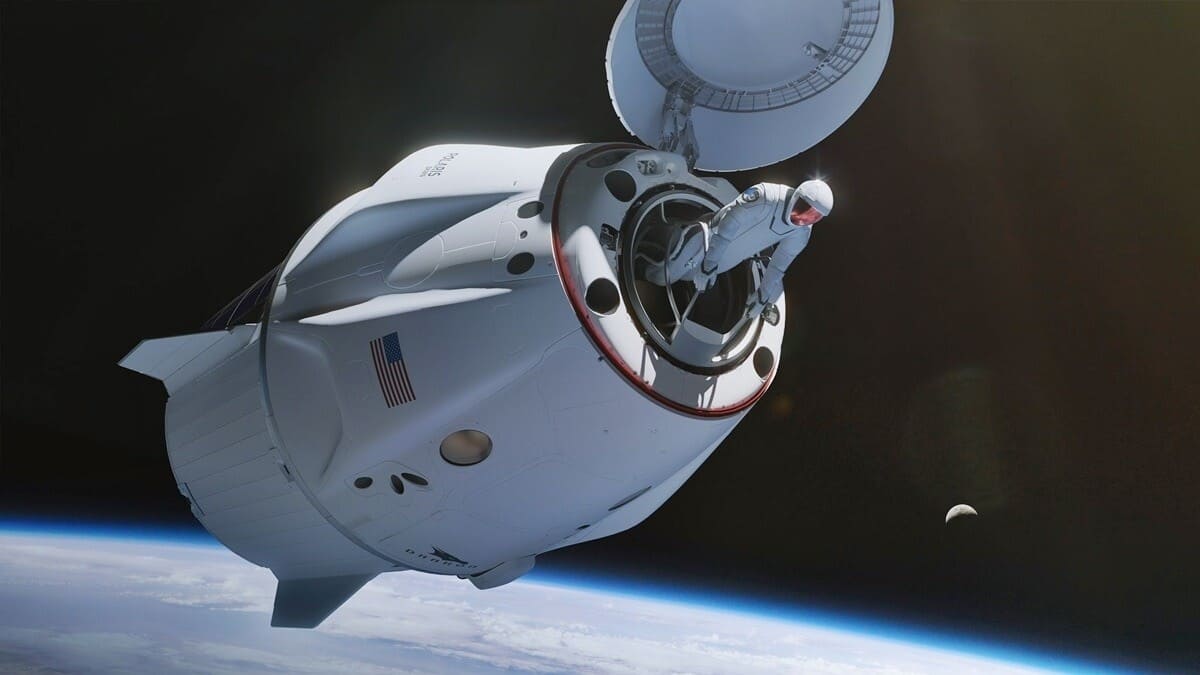
Polaris Dawn takes flight: SpaceX launches first private spacewalk mission
What's the story
SpaceX has successfully launched the highly anticipated Polaris Dawn mission, marking a significant milestone in private space exploration.
This five-day mission, led by billionaire Jared Isaacman, represents the first time a private spaceflight will include a spacewalk.
The crew includes Air Force pilot Scott "Kidd" Poteet and SpaceX engineers Anna Menon and Sarah Gillis.
The SpaceX Crew Dragon capsule lifted off today from NASA's Kennedy Space Center in Florida at 2:54 pm IST aboard the Falcon 9 rocket.
Historic spacewalk
Polaris Dawn to conduct 1st commercial spacewalk
A key objective of the Polaris Dawn mission is to carry out the first-ever commercial spacewalk.
On the third day of their journey, crew members Isaacman and Gillis will step outside the capsule at an altitude of approximately 700km above Earth, spending up to 20 minutes in outer space. Poteet and Menon will monitor them from inside.
This endeavor will serve as a test for SpaceX's new extravehicular activity (EVA) suits, designed specifically for future long-duration missions.
Ambitious goal
Mission aims for record-breaking orbital altitude
The Polaris Dawn mission aspires to reach an unprecedented orbital altitude for a commercial flight, potentially ascending to 1,400km above Earth's surface.
If successful, this would surpass the record set by the Gemini 11 mission and mark the highest Earth orbit flown by humans since the Apollo program.
Their trajectory will take them into the outer region of Van Allen radiation belt—a region of intense radiation surrounding Earth—providing valuable data on space radiation's impact on human health and spacecraft systems.
Tech trials
Polaris Dawn to test Starlink laser-based communications
In addition to setting new records, the Polaris Dawn crew will test Starlink laser-based communications in space and conduct numerous scientific experiments.
One such experiment involves wearing smart contact lenses to monitor intraocular pressure, as part of a University of Colorado Boulder research project on Spaceflight Associated Neuroocular Syndrome (SANS).
These activities underscore SpaceX's commitment to advancing human spaceflight capabilities through innovative technology and research.
Mission hurdles
Launch challenges and preparation for Polaris Dawn
The Polaris Dawn mission faces unique challenges, including the absence of an airlock on the Crew Dragon capsule.
This necessitates an extended pre-breathing process for the crew to prepare for their spacewalk.
SpaceX's suits will rely on long hoses attached to the spacecraft for life support
The Polaris Dawn crew has undergone over two years of intensive training for the mission, including skydiving, centrifuge and altitude training, simulations, medical training, and familiarization with the spacesuits in a vacuum environment.
Risky affair
The risks surrounding the mission
However, the Polaris Dawn mission is not without risks. The journey into the Van Allen radiation belts exposes the crew to higher levels of radiation than experienced on the ISS.
Additionally, the spacewalk itself carries inherent risks associated with working in the harsh environment of space.
For the spacewalk, the crew must remove nitrogen from their blood so that when the Dragon capsule is depressurized and exposed to the vacuum of space, gas bubbles don't form in their bloodstream.